A Historical overview of Norfolk State University
During a time when many thought African Americans believed that their future was limited, there were those who thought and knew that a future offering great possibilities was achievable. These community leaders envisioned that an institution of higher education located in Norfolk would encourage the growth of a homegrown educated elite who were likely to remain in Hampton Roads where their expertise would ensure the growth and success of the community.
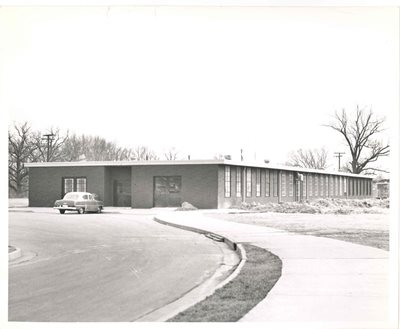 Winston Douglas, principal of Booker T. Washington High School, chaired the committee to establish a junior college that would later emerge as the Norfolk Division of Virginia Union University. Joined by community leaders including educator and community leader Ruth Hucles, the Reverend Richard Bowling of the Historic First Baptist Church, Drs. G. Hamilton Francis and D.W. Byrd who served as presidents of the National Medical Association, the Reverend Bravid Harris of Grace Episcopal Church, Metropolitan Bank president William Rich, owner and publisher of the Journal and Guide P.B. Young, prominent contractor and philanthropist John C. Brooks, the Reverend Adolphus Hobbs who was president of the Baptist General Association of Virginia and the Colored United Charities of Norfolk, businessman William T. Mason, and educator and community leader Elsie Frazier. Soon, forty-one community leaders united to support the establishment of this institution, through scholarship committees, extensive recruitment activities, and donations.
Winston Douglas, principal of Booker T. Washington High School, chaired the committee to establish a junior college that would later emerge as the Norfolk Division of Virginia Union University. Joined by community leaders including educator and community leader Ruth Hucles, the Reverend Richard Bowling of the Historic First Baptist Church, Drs. G. Hamilton Francis and D.W. Byrd who served as presidents of the National Medical Association, the Reverend Bravid Harris of Grace Episcopal Church, Metropolitan Bank president William Rich, owner and publisher of the Journal and Guide P.B. Young, prominent contractor and philanthropist John C. Brooks, the Reverend Adolphus Hobbs who was president of the Baptist General Association of Virginia and the Colored United Charities of Norfolk, businessman William T. Mason, and educator and community leader Elsie Frazier. Soon, forty-one community leaders united to support the establishment of this institution, through scholarship committees, extensive recruitment activities, and donations.
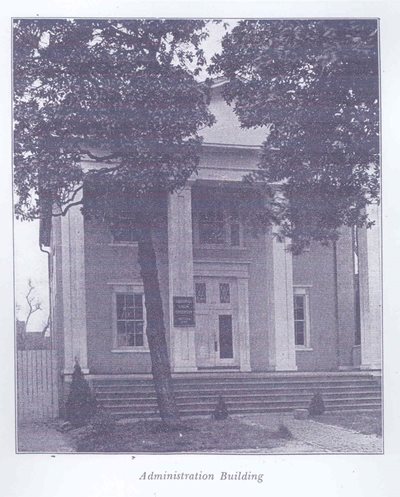 And so, Norfolk State University was born in the midst of the Great Depression and began serving as a vessel for new and exciting possibilities for the region’s youth. Focusing on an arts and sciences curriculum with 13 subjects that included African American history, the Norfolk Unit of Virginia Union University began very modestly as a private Baptist institution on September 18, 1935, with 85 students in three second-floor rooms in the Hunton YMCA on Brambleton Avenue. Samuel Fischer Scott served as director for three years. Scott, along with George William Clement Brown, the school’s first business manager, St. Paul Epps, the first student to pay his fees and enroll in the school, and many others conducted a door-to-door recruitment campaign for students until the day the school opened its doors. Scott was succeeded by Dr. Lyman B. Brooks in 1938. Brooks immediately moved the college to a larger building on Bank Street, and in 1942 severed the Unit’s ties with Virginia Union.
And so, Norfolk State University was born in the midst of the Great Depression and began serving as a vessel for new and exciting possibilities for the region’s youth. Focusing on an arts and sciences curriculum with 13 subjects that included African American history, the Norfolk Unit of Virginia Union University began very modestly as a private Baptist institution on September 18, 1935, with 85 students in three second-floor rooms in the Hunton YMCA on Brambleton Avenue. Samuel Fischer Scott served as director for three years. Scott, along with George William Clement Brown, the school’s first business manager, St. Paul Epps, the first student to pay his fees and enroll in the school, and many others conducted a door-to-door recruitment campaign for students until the day the school opened its doors. Scott was succeeded by Dr. Lyman B. Brooks in 1938. Brooks immediately moved the college to a larger building on Bank Street, and in 1942 severed the Unit’s ties with Virginia Union. 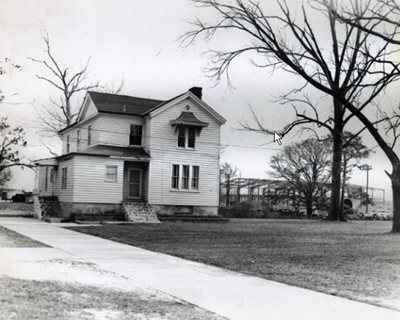 From 1942 to 1944, the school was known as Norfolk Polytechnic College. On February 29, 1944, the college came under state control as the Norfolk Division of Virginia State College. In the same year, the college moved to the old Saint Vincent’s Hospital compound on Wood Street.A burgeoning enrollment necessitated relocation to a 55-acre tract of land along Corprew Avenue that was formerly used as a golf course. The first classes were held in unfinished-multi-purpose Tidewater Hall (Brown Hall) in September 1955. In the following fall, the Norfolk Division began offering four-year programs. The first four-year degrees were awarded in 1958 to 28 graduates in elementary education and business.
From 1942 to 1944, the school was known as Norfolk Polytechnic College. On February 29, 1944, the college came under state control as the Norfolk Division of Virginia State College. In the same year, the college moved to the old Saint Vincent’s Hospital compound on Wood Street.A burgeoning enrollment necessitated relocation to a 55-acre tract of land along Corprew Avenue that was formerly used as a golf course. The first classes were held in unfinished-multi-purpose Tidewater Hall (Brown Hall) in September 1955. In the following fall, the Norfolk Division began offering four-year programs. The first four-year degrees were awarded in 1958 to 28 graduates in elementary education and business.
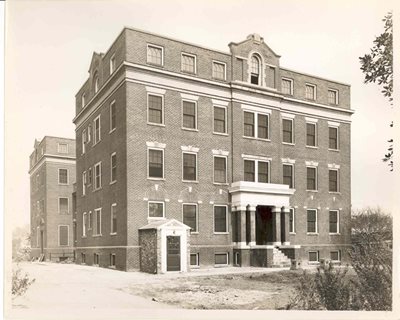 Extracurricular activities on the new campus began to resemble those of other colleges in 1962 when the college joined the Central Intercollegiate Athletic Association (CIAA), and three sorority chapters and three fraternity chapters were established
Extracurricular activities on the new campus began to resemble those of other colleges in 1962 when the college joined the Central Intercollegiate Athletic Association (CIAA), and three sorority chapters and three fraternity chapters were established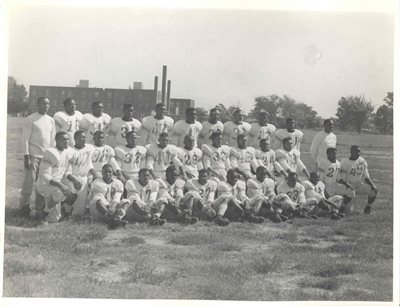 In the 1966-67 academic year, enrollment at the Norfolk Division exceeded the enrollment at Virginia State. On February 1, 1969, Norfolk State College became an independent, four-year baccalaureate-granting institution with an 11-member governing board. Growth continued as the college hired its first full-time alumni director in 1970 and elected the first president of the newly organized National Alumni Association in 1971. Newly chartered chapters included Chicago, Cleveland, Detroit, New York, Norfolk, Northern New Jersey, the Peninsula, Richmond and Washington, D.C.
In the 1966-67 academic year, enrollment at the Norfolk Division exceeded the enrollment at Virginia State. On February 1, 1969, Norfolk State College became an independent, four-year baccalaureate-granting institution with an 11-member governing board. Growth continued as the college hired its first full-time alumni director in 1970 and elected the first president of the newly organized National Alumni Association in 1971. Newly chartered chapters included Chicago, Cleveland, Detroit, New York, Norfolk, Northern New Jersey, the Peninsula, Richmond and Washington, D.C.
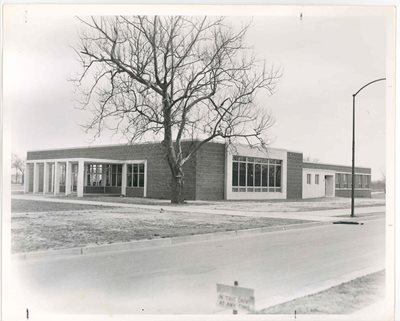 By the early 1970s, an additional 44 acres had been added to the campus extending it westward to Park Avenue, two residential towers, a Fine Arts building, a dining hall complex, and a three-story library had been built.
By the early 1970s, an additional 44 acres had been added to the campus extending it westward to Park Avenue, two residential towers, a Fine Arts building, a dining hall complex, and a three-story library had been built.
Dr. Harrison B. Wilson assumed the presidency in July 1975 after Dr. Brooks retired following 37 years of outstanding service. The master’s degree in Communication became the first graduate program offered at Norfolk State in September 1974. Classes began in the Graduate School of Social Work in January 1975. In recognition of its graduate programs and growing enrollment, the General Assembly approved a bill stipulating that the college would assume university status on July 1, 1979.
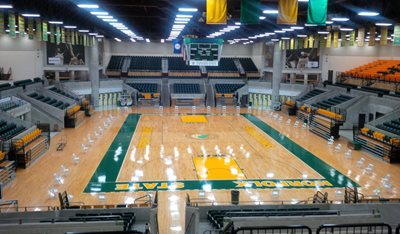 The construction of Joseph G. Echols Hall in 1982 with a seating capacity of 7,500 for basketball games gave Norfolk State one of the largest on-campus gymnasiums among black colleges and universities. A new women’s dormitory was built on the west side of campus in 1982, and in the following year, a five-story administration building was completed. It centralized the major administrative offices on campus and enhanced efficiency.
The construction of Joseph G. Echols Hall in 1982 with a seating capacity of 7,500 for basketball games gave Norfolk State one of the largest on-campus gymnasiums among black colleges and universities. A new women’s dormitory was built on the west side of campus in 1982, and in the following year, a five-story administration building was completed. It centralized the major administrative offices on campus and enhanced efficiency.
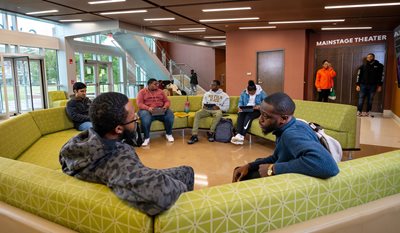 The University celebrated its 50th anniversary in 1985, and the tenth anniversary of Wilson’s tenure at Norfolk State. From three rooms and 85 students, the school had grown to 255 classrooms, and 7,200 students in 22 buildings.
The University celebrated its 50th anniversary in 1985, and the tenth anniversary of Wilson’s tenure at Norfolk State. From three rooms and 85 students, the school had grown to 255 classrooms, and 7,200 students in 22 buildings.
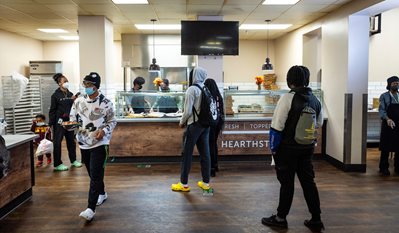 The University achieved important academic milestones in the 1990s. The School of Business joined a very elite group by being awarded national accreditation in 1990. NSU became only the fourth historically black university to win the recognition. When the Ethelyn R. Strong School of Social Work began its doctoral program in 1995, only about 25 historically black universities in the country offered doctoral degrees.
The University achieved important academic milestones in the 1990s. The School of Business joined a very elite group by being awarded national accreditation in 1990. NSU became only the fourth historically black university to win the recognition. When the Ethelyn R. Strong School of Social Work began its doctoral program in 1995, only about 25 historically black universities in the country offered doctoral degrees.
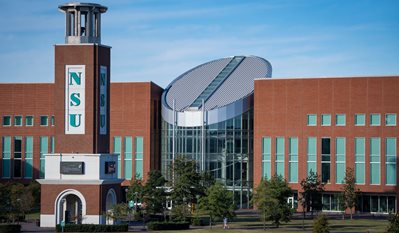 Norfolk State moved closer toward being a residential college in the early ’90s when three dormitories were opened on the east campus. The expansion of the campus necessitated the introduction of a shuttle bus service in 1992.
Norfolk State moved closer toward being a residential college in the early ’90s when three dormitories were opened on the east campus. The expansion of the campus necessitated the introduction of a shuttle bus service in 1992.
Following the completion of a baseball field and women’s softball field in 1996, and a 30,000-seat football stadium in 1997, NSU was widely regarded as having first-class athletic facilities. It was no coincidence that in 1997 the school left the Division II CIAA and moved up to the Mid-Eastern Athletic Conference (MEAC) Division I-AA, because Dr. Wilson had been upgrading facilities and planning the move for several years.
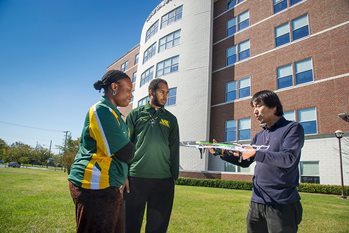 Wilson retired in 1997 after 22 years at NSU, and Dr. Marie V. McDemmond succeeded him, becoming the first woman to lead the University and the first African-American woman to lead a four-year public institution in the Commonwealth of Virginia. McDemmond, who described herself as a fiscal conservative, spent considerable time balancing the budget and crafting a new image for the University.
Wilson retired in 1997 after 22 years at NSU, and Dr. Marie V. McDemmond succeeded him, becoming the first woman to lead the University and the first African-American woman to lead a four-year public institution in the Commonwealth of Virginia. McDemmond, who described herself as a fiscal conservative, spent considerable time balancing the budget and crafting a new image for the University. .jpg.aspx?width=400&height=268) She set a course to develop Norfolk State into a technology powerhouse, initiating academic programs in computer science and electrical and optical engineering and building the 128,000 square-foot research structure that is home to several research centers which are expected to generate discoveries that will become commonplace in the marketplace. After eight years as president, McDemmond stunned the university community in March 2005 when she announced her intention to resign on June 30 for health reasons.
She set a course to develop Norfolk State into a technology powerhouse, initiating academic programs in computer science and electrical and optical engineering and building the 128,000 square-foot research structure that is home to several research centers which are expected to generate discoveries that will become commonplace in the marketplace. After eight years as president, McDemmond stunned the university community in March 2005 when she announced her intention to resign on June 30 for health reasons.
Dr. Alvin J. Schexnider served as Interim President from July 2005 until Dr. Carolyn Meyers, the University’s fourth president, arrived in July 2006. After her arrival, fundraising increased, and enrollment experienced a significant growth as a result of her leadership team’s strategies. A new student union building opened, and construction began on a new library. During the 2008-09 academic year, the University achieved five major accreditations or reaffirmations of accreditation from the Southern Association of Colleges and Schools, Accreditation Board of Engineering and Technology (electronics and optical engineering), Association to Advance Collegiate Schools of Business, National Council for Teacher Education and recertification of athletics programs by the National Collegiate Athletic Association. Meyers left the University in 2010.
 Kim Luckes served as acting president from July 1, 2010 through June 30, 2011, during the search for a new president. Dr. Tony Atwater was appointed the fifth president of Norfolk State University April 22, 2011. After becoming NSU president in July 2011, Atwater wasted no time initiating programs designed to improve graduation rates and to develop a connection with the business community. He also reached out to the education community, forming partnerships with area elementary, middle and high schools, as well as with community colleges. Atwater served two years as president.
Kim Luckes served as acting president from July 1, 2010 through June 30, 2011, during the search for a new president. Dr. Tony Atwater was appointed the fifth president of Norfolk State University April 22, 2011. After becoming NSU president in July 2011, Atwater wasted no time initiating programs designed to improve graduation rates and to develop a connection with the business community. He also reached out to the education community, forming partnerships with area elementary, middle and high schools, as well as with community colleges. Atwater served two years as president.
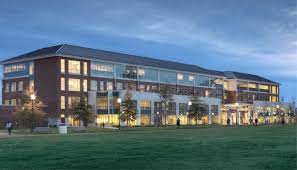 Appointed by the Board of Visitors, Dr. Sandra J. Deloatch served as Acting President until the appointment of the sixth president, Eddie N. Moore, Jr. Under Moore’s administration, NSU was selected as the lead institution in a $25 million cybersecurity education and workforce pipeline initiative.
Appointed by the Board of Visitors, Dr. Sandra J. Deloatch served as Acting President until the appointment of the sixth president, Eddie N. Moore, Jr. Under Moore’s administration, NSU was selected as the lead institution in a $25 million cybersecurity education and workforce pipeline initiative. 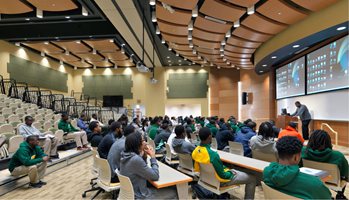 The University leads a consortium consisting of Historically Black Colleges and Universities, Department of Energy National Laboratories and a public school district. Vice President Joe Biden selected Norfolk State University as the site for the announcement on the cybersecurity grant and consortium. Additionally, the construction of the Nursing and General Education Classroom building was completed along with the reconstruction of the G. W. C. Brown Memorial Hall was realized. Moore served for four years until his retirement in December 2017.
The University leads a consortium consisting of Historically Black Colleges and Universities, Department of Energy National Laboratories and a public school district. Vice President Joe Biden selected Norfolk State University as the site for the announcement on the cybersecurity grant and consortium. Additionally, the construction of the Nursing and General Education Classroom building was completed along with the reconstruction of the G. W. C. Brown Memorial Hall was realized. Moore served for four years until his retirement in December 2017.
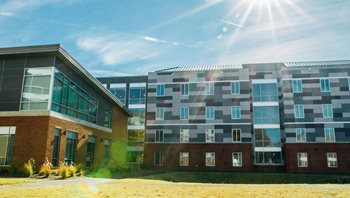 NSU alumnus, Dr. Melvin T. Stith, Sr. led the University from 2018-2019 as Interim President.
NSU alumnus, Dr. Melvin T. Stith, Sr. led the University from 2018-2019 as Interim President.
Dr. Javaune Adams-Gaston is the seventh President of Norfolk State University. She began her tenure on June 24, 2019. As President, she is committed to ensuring that Norfolk State University fulfills its mission as an HBCU for the modern world, a university grounded by its heritage, focused on the future, and deeply committed to student success. 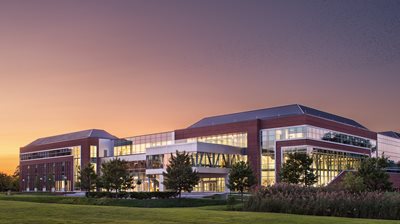 Her vision is student success, opportunity access and affordability, and growth and sustainability. A strong advocate for collaboration and developing strategic partnerships with local, regional, and state stakeholders, Dr. Adams-Gaston is committed to cultivating strong connections with alumni and the community.
Her vision is student success, opportunity access and affordability, and growth and sustainability. A strong advocate for collaboration and developing strategic partnerships with local, regional, and state stakeholders, Dr. Adams-Gaston is committed to cultivating strong connections with alumni and the community.